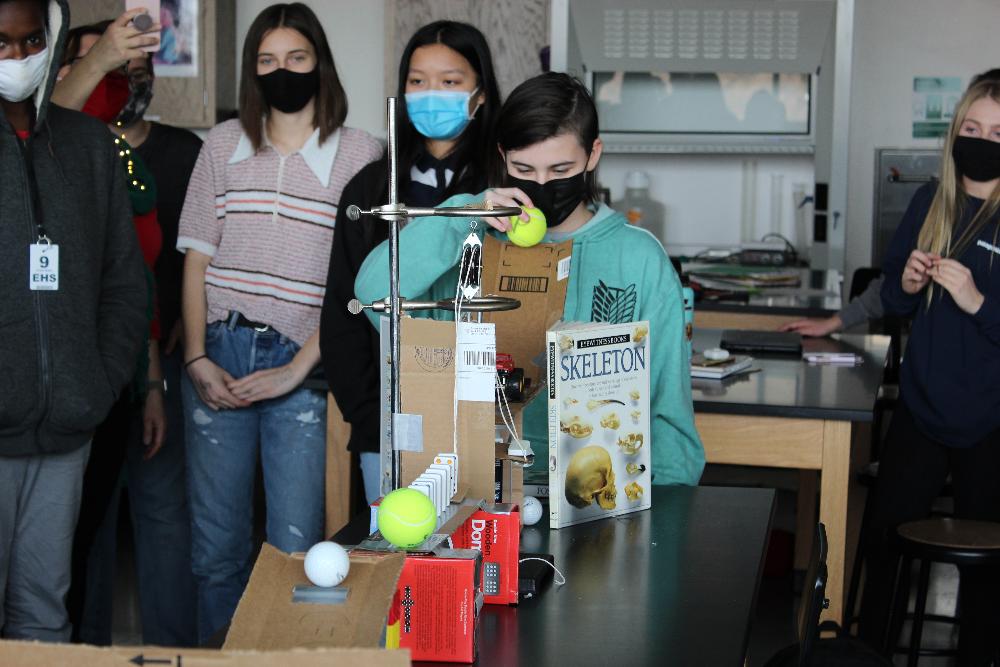Collaboration, creativity and connections at Science Focus Program
January 6, 2021
Collaboration, creative learning and connecting the dots between different subject areas are a few of the hallmarks of the Lincoln Public Schools Science Focus Program.
There’s perhaps no better illustration of this than a project ninth-graders at the focus program completed at the end of the first semester. Students in Johnna Graff’s English course, Mark Anderson’s Human Geography course and Emily Rose Seifferlein’s Physical Science course worked in small groups to complete a multi-disciplinary, multi-genre project that incorporated material from all three courses.
“One of our goals is to always gently confront students with the interconnectedness of the world, and one of the best ways we have found to do that is by connecting points of relationship and commonality across curriculum,” Anderson said.
Students were asked to create a character in a geographic region who had a problem to be solved. They had to write a short story to set the stage. Finally, they had to solve the problem by constructing a Rube Goldberg machine.
The project drew upon material the students had learned during second quarter. For English, the assignment allowed students to move beyond comprehending literature to applying that knowledge to their own stories. By creating a Rube Goldberg machine, students applied what they learned about the motion of objects, force and momentum, and energy conservation in Physical Science. For Human Geography, students incorporated the five themes of geography (movement, region, location, human environment interaction, character of place), culture and language into their short stories.
“In English,” Graff said, “students were to not only apply the elements of fiction to their story, but also make some connection to a text we had read.”
“We want the students to understand that the concepts they are learning are not discrete and are not just something to know about,” Seifferlein said, “but that they can be applied in unique situations and can be used to solve problems in the real world.”
“For Geography,” Anderson said, “it is important to see culture and place as mutually dependent. Where you live changes the possibilities of how you live, and how you live alters where you live. This project makes this relationship more directly apparent and allows students an opportunity to reflect on how the place they live in influences their possibilities.”
Students presented their final projects Dec. 18. One project included a story about an evil mayor who cut off the water supply to a neighboring village. Students presented the story, the problem (no water supply), and for the grand finale, their Rube Goldberg machine. A small green ball made its way through the elaborate Rube Goldberg and at the very end, it triggered the dumping of a small bowl of water. Problem solved, time to celebrate.
“Yes!” exclaimed group member Eva Bloom.
Published: January 6, 2021, Updated: January 11, 2021

